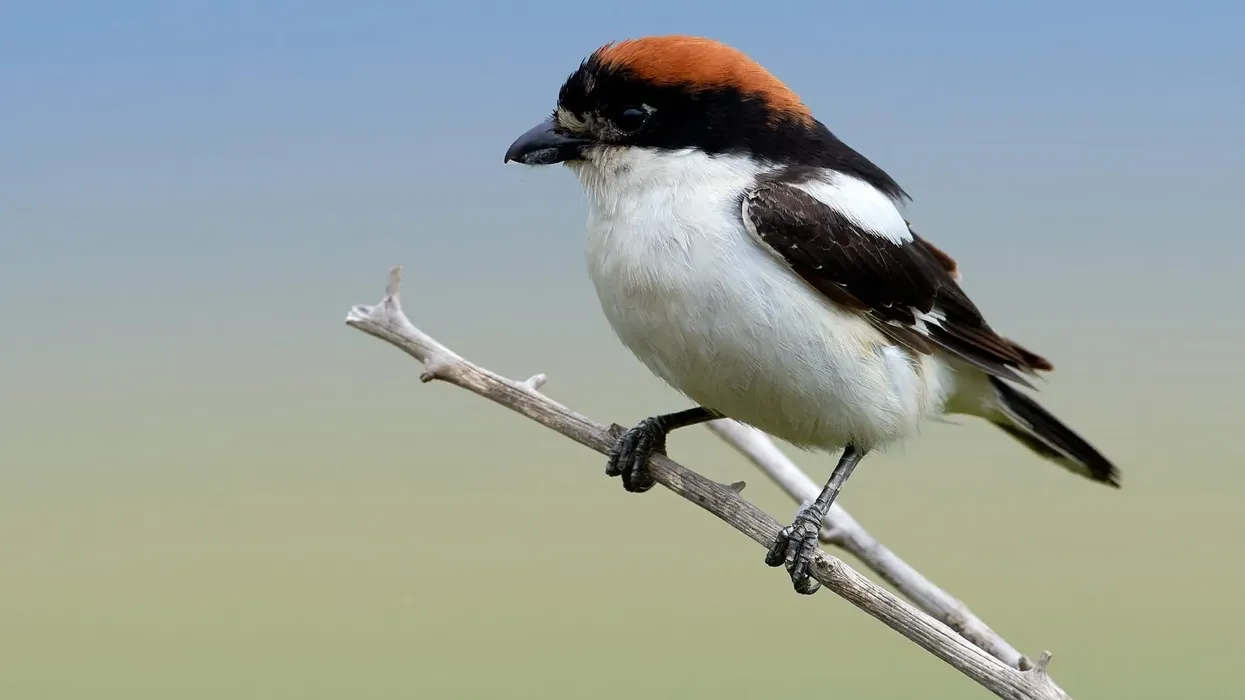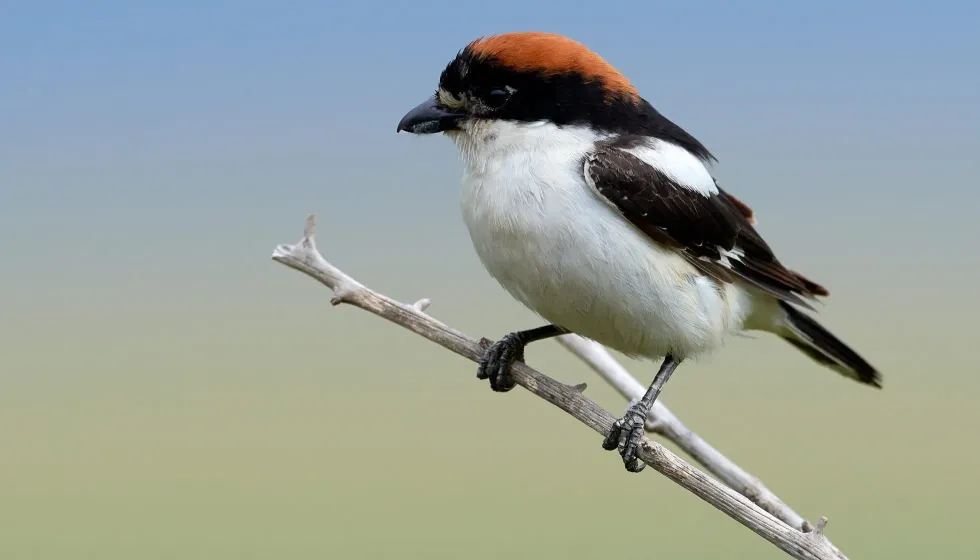The woodchat shrike (Lanius senator) is a very famous predatory bird. These birds are migratory and spend their winters in tropical Africa and breed in the Middle East.
A woodchat shrike is very lovely to look at, however, these birds are excellent predators, and they often sit on prominent perches of old orchids waiting for their prey. These birds are often seen taking small birds into their nest. These birds are found in the Mediterranean region of Europe more, especially during the summers.
The predatory habits of this species are not new to anyone, especially to the countries it very often migrates to. These birds have even been referred to these birds as butcherbirds.
The genus name of this species is Lanius that means butcher in Latin. There are many subspecies of the Lanius senator, however, they look very different and can be easily distinguished when compared to this species after careful identification.
To learn more about such birds of the world, don't forget to check out our shrike facts and loggerhead shrike facts pages.
Woodchat Shrike Interesting Facts
What type of animal is a woodchat shrike?
The woodchat shrike, Lanius senator, is a kind of bird and it originates from the Laniidae family.
What class of animal does a woodchat shrike belong to?
The Lanius senator badius belongs to the Aves class.
How many woodchat shrikes are there in the world?
There are around 33 plus species of shrike and around four genera in the entire world. The total population of the shrikes in the world is around 5.8 million. Although, the exact population of woodchat shrike is still not known.
Where does a woodchat shrike live?
The population of woodchat shrike, Lanius senator badius, covers a distribution across southern Europe along with the Mediterranean region as well during the summers. These birds are also found in Subsaharan Africa and also in some regions of India.
What is a woodchat shrike's habitat?
During winters you can find the woodchat shrike, Lanius senator, in central Africa. While some people believe these birds can also be found in the western side of Africa, it is highly likely to be present in regions such as Sudan and Ethiopia mostly.
These birds are not very dependent on forests so they prefer low altitudes with lots of agricultural lands and old orchid trees.
For families wishing to provide an artificial habitat for these birds, rural gardens and regarded tropical lands would be an ideal choice. However, a natural woodchat shrike habitat includes open woodland and moist lowland forests, along with semi-open areas with lots of bushes and trees.
Who do woodchat shrikes live with?
These species mostly live in open lands and as they are fully migratory, it's pretty evident that the tiny Lanius senator badius have many neighbors. Birds such as the European robin and pittas are common neighbors of this bird from Europe and Asia.
How long does a woodchat shrike live?
Woodchat shrikes have a life expectancy of around three to five years.
How do they reproduce?
The woodchat shrikes mainly breed in May and June, in the southern region of Europe. The Lanius senator badius prefer open lands when comes to breeding with either bare or sandy grounds.
The nest is often situated either on a fruit tree or on a pine tree, shaped like a cup and built with twigs, moss, and spiderwebs. Females lay around four to eight eggs and they incubate for around 14-16 days by both the parents.
What is their conservation status?
Their status is Least Concern, thanks to the vast distribution of this brown bill bird. These species enjoy a very healthy and growing population.
Woodchat Shrike Fun Facts
What do woodchat shrikes look like?
It's very easy to identify these species. They have a cinnamon-orange crown. The male has gray-ish brown underparts and a small black bill, they have a long tail and both the wings are dark. In females, the bill is pale brown and the tail is brown too. Both the sexes have dark eyes and gray legs.
How cute are they?
These birds are some of the most cutest birds one can find. Birdwatchers all across the world love to catch sight of this bird.
How do they communicate?
In the Middle East and Africa, woodchat shrikes' calls are very common. A woodchat shrike call is often a soft repetitive 'kwikwik' sound, most times it's simply used during the courtship, or other times it's done when protecting the nest during the breeding season.
How big is a woodchat shrike?
In length, these species are not very small but they aren't very large too. They are slightly smaller than a mockingbird and around 10 times smaller than a hawk.
How fast can a woodchat shrike move?
This pale-brown bird with an orange crown can move pretty quickly on the ground. These species sometimes also feed on berries and fruits. Although their distribution is so vast, it's evident that these species fly excellent.
How much does a woodchat shrike weigh?
A woodchat shrike weighs around 1.05-1.26 oz (30-36 g).
What are the male and female names of the species?
Both the males and females in this species carry the same scientific and general name. For better identification of these species, both sexes are given similar names and are not addressed differently.
What would you call a baby woodchat shrike?
Babies of the Lanius senator badius are called nestlings or hatchlings. If the egg has hatched minutes ago, then the young are called hatchlings, otherwise, they are called nestlings.
What do they eat?
The woodchat shrike is an excellent predatory bird, some even consider them very brutal with their ways of hunting. Its also believed that their predatory style is similar to many bigger birds such as hawks and eagles.
In the western and east of Africa, they mainly feed on large insects like dragonflies or grasshoppers. They also feed on small birds and lizards and frogs as well. Sometimes they even come to the ground for picking plant matters or seeds.
Are they dangerous?
No, although they are called butcher birds, they are not dangerous to humans in any way possible.
Would they make a good pet?
Yes, these pale brown birds can be excellent birds, their song, calls, and time to time chirp can be an absolute symphony to the ears.
Did you know...
The woodchat shrike is highly territorial and they are also a monogamous species.
The woodchat shrike range map
The woodchat migrates very often and breeds in Europe, their distribution is very vast, this small black bill bird also breeds in West Asia and the Middle East along with the Mediterranean region as well. For winters, these species migrate to Africa and towards the North.
How many babies do woodchat shrikes have?
The woodchat shrikes lay four to six eyes during a breeding season and the young depend on their parents for around three to four weeks.
Here at Kidadl, we have carefully created lots of interesting family-friendly animal facts for everyone to discover! Learn more about some other birds from our northern shrike facts and red-backed shrike fact pages.
You can even occupy yourself at home by coloring in one of our free printable woodchat shrike coloring pages.










